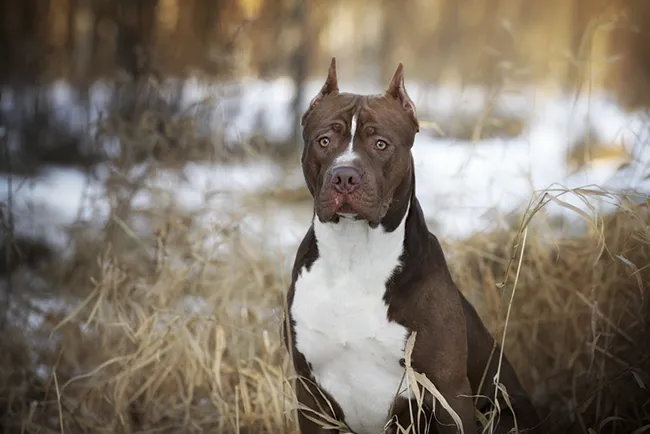
The American Pit Bull Terrier, often called a “Pit Bull,” is a cherished family and companion breed with a fascinating history. These dogs were initially bred for bull-baiting, but they soon evolved into versatile farm animals and even earned the nickname “nanny dogs” for their gentle disposition around children. While the term “Pit Bull” is often used, it’s essential to note that it encompasses several breeds with shared physical characteristics, including the American Pit Bull Terrier, American Staffordshire Terrier, Staffordshire Bull Terrier, and the American Bully.
Despite their loving and loyal nature, Pit Bull Terriers have been unfairly associated with aggression, primarily due to their historical involvement in dogfighting. In reality, they are no more inherently aggressive than other breeds, and they’ve even earned a ranking as the fourth most gentle breed by the American Temperament Test Society. Unfortunately, Pit Bulls often face breed discrimination, leading to bans in some areas and insurance denials.
When considering adding a Pit Bull Terrier to your family, adopting from rescue organizations or shelters is a commendable choice. Many Pit Bulls and Pit Bull Mixes are looking for loving homes, and adopting from these facilities can be incredibly rewarding. You can easily find adult Pit Bull Terriers or puppies in shelters. If you decide to buy from a breeder, it’s crucial to select a reputable one. Conduct thorough research to ensure ethical breeding practices. Reputable breeders prioritize the health and temperament of their dogs, conduct necessary health screenings, and create a nurturing environment for their puppies, ensuring you bring home a healthy and happy pup while discouraging unethical breeding practices.
The American Pit Bull Terrier is a medium-sized breed known for its short coat, well-muscled physique, and a winning smile. Explore the wonderful world of the American Pit Bull Terrier, a breed with a heart as big as its smile, and find out why they make great family pets.
Table of Contents
- 16 Quick Facts American Pit Bull Terrier
- American Pit Bull Pictures
- American Pit Bull Terrier Overview
- History of American Pit Bull Terriers
- American Pit Bull Terrier Size
- American Pit Bull Terrier Personality
- Adaptability of American Pit Bull Terriers
- All-Around Friendliness
- American Pit Bull Terrier Health
- American Pit Bull Terrier Care
- American Pit Bull Terrier Exercise needs
- Trainability of American Pit Bull Terrier
- American Pit Bull Terrier Feeding
- Coat Color And Grooming
- Where to Adopt or Buy an American Pit Bull Terrier
- American Pit Bull Terrier Pros and Cons
- FAQ.
16 Quick Facts American Pit Bull Terrier
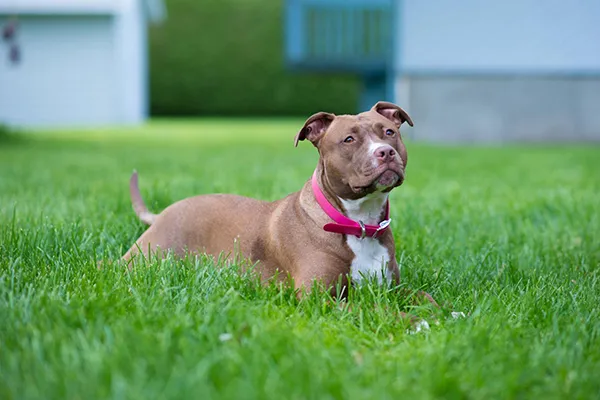
- American Origin: The American Pit Bull Terrier, often referred to as the Pit Bull, is a breed native to the United States. Their history is deeply intertwined with the country’s development and culture.
- Medium Size: Pit Bulls are classified as medium-sized dogs. Males typically stand 18-19 inches tall at the shoulder and weigh between 35-60 pounds, while females stand 17-18 inches tall and weigh 30-50 pounds. This size is well-suited for active families and individuals.
- Impressive Lifespan: The American Pit Bull Terrier boasts a relatively long lifespan, averaging between 12 to 14 years. This extended life expectancy allows for many years of companionship and shared experiences with their owners.
- Versatile Coat Colors: Their coat comes in a variety of colors, making them visually striking. Common coat colors include black, brown, white, brindle (striped), and red. This diversity adds to the breed’s aesthetic appeal.
- Affectionate and Intelligent Temperament: Pit Bulls are known for their affectionate, loyal, playful, and intelligent nature. They have a strong bond with their families and are highly responsive to training, making them excellent family pets. This affectionate temperament has led to their historical role as “nanny dogs” for children.
- Moderate Exercise Needs: American Pit Bull Terriers have moderate exercise requirements, needing at least 30 minutes of physical activity per day. Regular exercise keeps them physically fit and mentally stimulated, preventing boredom-related behaviors.
- Training and Stubbornness: While they are generally easy to train due to their intelligence and desire to please their owners, Pit Bulls can sometimes display stubborn behavior. Consistency and positive reinforcement training methods work best to address any challenges. They thrive in environments with clear boundaries and positive interactions.
- Low-Maintenance Grooming: Their short, smooth coat is easy to maintain. A weekly brushing session is usually sufficient to keep their coat in good condition. Their grooming requirements are straightforward, making them a practical choice for individuals seeking low-maintenance pets.
- Common Health Concerns: Pit Bulls are prone to certain health issues, including hip dysplasia, elbow dysplasia, and allergies. Regular veterinary check-ups, a balanced diet, and exercise are essential for their overall well-being. Owners should be aware of these common health concerns and take appropriate preventive measures.
- Covers of Life Magazine: The American Pit Bull Terrier is the only breed to have graced the cover of Life Magazine three times. These covers featured famous Pit Bulls such as Petey from the “Our Gang” comedy shorts in 1942, Stubby, a World War I mascot for the 102nd Infantry in 1965, and Sweet Pea, a therapy dog for children with disabilities in 1971.
- War Hero Stubby: Sergeant Stubby, an American Pit Bull Terrier, is celebrated as one of the most decorated war dogs in history. He served during World War I and played various roles, including mascot, guard dog, messenger, and casualty search dog. Stubby’s bravery and loyalty made him an iconic figure in military history.
- Famous Pit Bull Owners: Several prominent figures, including Helen Keller and Theodore Roosevelt, have owned Pit Bulls, showcasing the breed’s affectionate and loyal nature. Helen Keller’s Pit Bull, named Sir Thomas, and Theodore Roosevelt’s Pit Bull, named Pete, were beloved members of their families.
- Historical “Nanny Dog” Role: Historically, Pit Bulls were known as “nanny dogs” due to their gentle and protective nature around children. They were often entrusted with watching over and caring for kids, earning a reputation for being reliable and trustworthy family pets.
- Therapy Dogs: American Pit Bull Terriers are frequently utilized as therapy dogs due to their affectionate and calm disposition. They have provided emotional support to individuals in hospitals, schools, and rehabilitation centers, demonstrating their ability to comfort and uplift those in need.
- Adopt-A-Bull: Many organizations and advocacy groups are dedicated to promoting the welfare of Pit Bulls and combating breed discrimination. These groups work tirelessly to find loving homes for Pit Bulls and educate the public about the true nature of the breed. They play a critical role in rescue, rehabilitation, and rehoming efforts.
- Versatile Abilities: American Pit Bull Terriers excel in various dog sports and activities, including agility, obedience, and weight-pulling competitions. Their intelligence and willingness to please make them quick learners and strong contenders in these events, showcasing their versatility and agility.
American Pit Bull Pictures
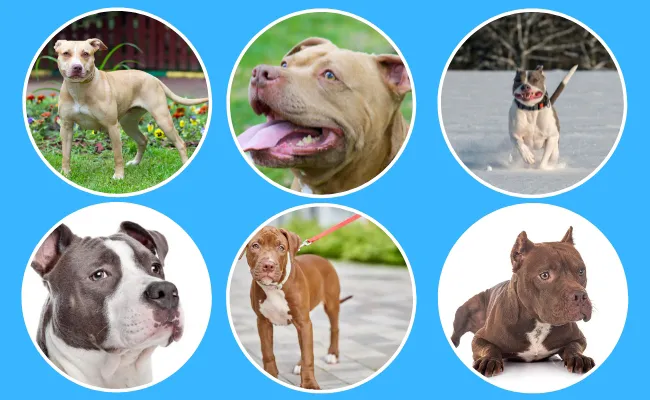
American Pit Bull Terrier Overview
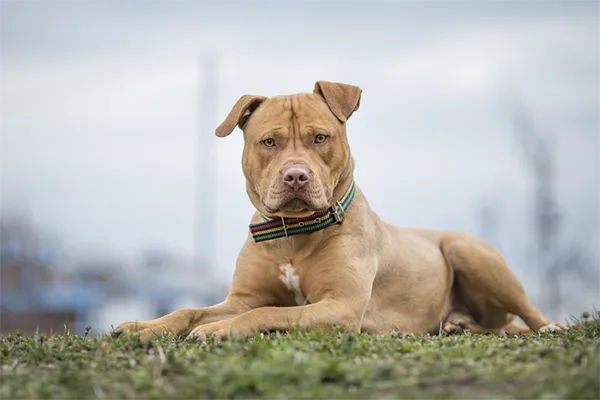
The American Pit Bull Terrier, often classified under the umbrella term “pit bull,” is a remarkable breed with a complex history. While the name “pit bull” is commonly used, it encompasses several related breeds, including the Bull Terrier, American Staffordshire Terrier, and Staffordshire Bull Terrier. The American Pit Bull Terrier is often compared to the American Staffordshire Terrier, leading to debates about their similarities and differences. This confusion originated from a decision made by the AKC in the 1930s to rename the American Pit Bull Terrier as the American Staffordshire Terrier to distance the breed from its historical association with pit-fighting.
It’s essential to note that the American Pit Bull Terrier is not officially recognized by the AKC, while the American Staffordshire Terrier, a slightly smaller breed, is. Unfortunately, these bull breeds, including the APBT, have been widely misunderstood. Their tenacity and intelligence, which make them excellent contenders in obedience and agility competitions, have also attracted unscrupulous individuals who exploit them for dog fighting.
This misuse of the breed has led to widespread misconceptions and unfounded fear, resulting in breed-specific legislation in various regions worldwide. As an American Pit Bull Terrier owner, you may encounter prejudice and hostility from those misinformed about your beloved dog. This breed isn’t for everyone, as they require dedicated training, socialization, and consistent guidance.
With proper upbringing, American Pit Bull Terriers make exceptional companions, especially for families with children. They are affectionate, gentle, and welcoming, often lacking the characteristics of a traditional guard dog. These dogs exhibit undying loyalty to their families and are willing to defend them if needed. Their high intelligence allows them to learn commands and tricks effortlessly. They maintain a youthful spirit well into adulthood, bringing joy and vitality to their owners’ lives. Once you experience the companionship of an American Pit Bull Terrier, you’ll wonder how you ever lived without one.
History of American Pit Bull Terriers
The history of the American Pit Bull Terrier is a tale of evolution and adaptation, shaped by the unique needs of its environment and the roles it played throughout the years. The breed can trace its origins to early 19th-century England, where breeders embarked on a fascinating journey to create a dog with a blend of traits – spirited, courageous, athletic, and gentle with their families.
This versatile breed served as a multipurpose working dog, excelling in various roles such as driving livestock, hunting, property protection, and other essential tasks. Beyond their work, they were cherished family companions. Unfortunately, their history is also marred by involvement in inhumane blood sports like bull baiting and dog fighting, which have unfairly stereotyped them as aggressive and led to bans in certain regions.
In the mid-1800s, the breed found its way to the United States, where it continued to evolve and adapt to its new environment. In 1898, the United Kennel Club (UKC) was founded, and the American pit bull terrier was the very first breed registered, representing the founder’s cherished canine companion.
Throughout the 20th century and into the modern era, American Pit Bull Terriers have proven to be incredibly versatile. In addition to their role as loyal family companions, they’ve excelled in various roles in society, including service and therapy dogs, police and military work, search-and-rescue missions, and more. Notably, the American Kennel Club (AKC) has not officially recognized this breed.
The breed’s history is intertwined with the bull- and bear-baiting spectator sports that were popular in early 19th-century England. When these cruel sports were outlawed in 1835, dog fighting emerged as a replacement, leading to the development of a genetic predisposition for dog aggression within the breed.
However, an important counterbalance was also present in their genetic makeup – an aversion to biting humans. Handlers in dog-fighting rings needed to separate dogs without putting themselves in harm’s way, leading to the development of a breed that was not only strong and protective but also gentle and family-friendly.
As immigrants brought these “bull dogs” to America, they took on new roles as all-around farm dogs. These roles included hunting wild game, safeguarding the property from animal intruders, and providing companionship to their owners. In the United States, the breed evolved to be larger, reflecting the prevailing “bigger is better” mindset.
In 1898, the UKC, Britain’s counterpart to the American Kennel Club, officially recognized these bull dogs as the American Pit Bull Terrier. However, the AKC took a different approach in the early 1930s, renaming the breed as the American Staffordshire Terrier to distance it from its pit-fighting past. Since then, the American Staffordshire Terrier has been bred for AKC conformation and dog shows, while the American Pit Bull Terrier has not. This divergence has resulted in subtle differences in both build and personality between the two breeds.
American Pit Bull Terrier Size
The American Pit Bull Terrier is a medium-sized breed known for its sturdy and athletic build. These dogs typically exhibit slight variations in size based on their gender.
For male American Pit Bull Terriers, the average height at the shoulder falls within the range of 18 to 21 inches. Females of this breed are slightly smaller, with an average height ranging from 17 to 20 inches.
In terms of weight, male American Pit Bull Terriers usually weigh between 35 to 60 pounds, while their female counterparts typically have a weight range of 30 to 50 pounds. These weight ranges can provide a general guideline for the size you can expect from an American Pit Bull Terrier, but individual dogs may vary slightly within these parameters.
Overall, the American Pit Bull Terrier’s medium size, combined with its well-muscled and agile body, makes it a versatile and athletic breed. These dogs are known for their strength and agility, which has contributed to their success in various roles throughout history.
American Pit Bull Terrier Personality
American Pit Bull Terriers are renowned for their warm and affectionate personalities. These dogs have an incredible love for people and often seem oblivious to their own size, happily considering themselves lap dogs whenever the opportunity arises. Their confidence and keen awareness of their surroundings make them excellent watchdogs, quick to alert their families to the presence of strangers. However, it’s essential to understand that their alertness is driven by their eagerness to greet and interact with anyone they consider a friend.
While American Pit Bull Terriers’ natural affection makes them less suitable as guard dogs, their unmatched courage and loyalty shine when it comes to defending their family. These dogs will go to great lengths to protect their loved ones, displaying unwavering devotion.
To ensure that these qualities are balanced by well-rounded behavior, early socialization is crucial for American Pit Bull Terriers. This process involves exposing them to a wide range of people, sights, sounds, and experiences during their formative months. Proper socialization helps shape a confident and adaptable adult dog, making it a vital aspect of raising a well-behaved American Pit Bull Terrier.
Adaptability of American Pit Bull Terriers
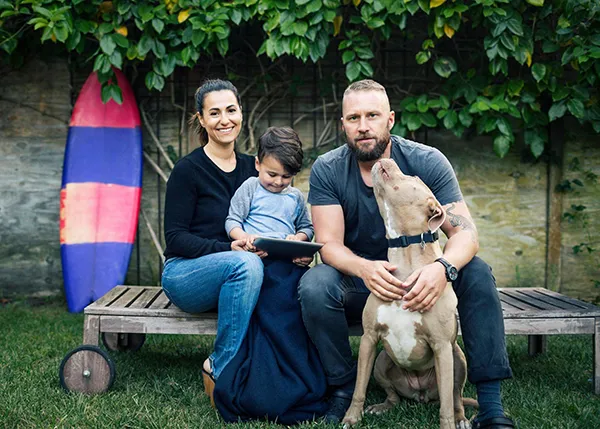
1. Apartment Living
When it comes to living in an apartment, the adaptability of a dog extends beyond just its size. American Pit Bull Terriers and other breeds can find contentment in smaller living spaces provided they have lower activity levels and a calm disposition. The decision to choose a dog for apartment living should also consider the dog’s behavior, as it plays a crucial role in harmonious coexistence with neighbors.
In apartment settings, it’s essential to prioritize qualities such as being quiet, low-energy, and exhibiting polite behavior when encountering others in shared spaces. While some larger breeds like American Pit Bull Terriers can adapt well to apartment living, smaller breeds with high energy levels might not be as suitable for smaller living spaces. Therefore, choosing a dog that doesn’t excessively bark and behaves politely in communal areas is vital for maintaining a peaceful apartment environment.
2. American Pit Bull Terrier For Novice Owners
When considering the American Pit Bull Terrier as a pet, it’s essential to assess its suitability for novice dog owners. While Pit Bulls are affectionate and loyal companions, they do come with unique characteristics that may not be the best fit for first-time dog parents.
American Pit Bull Terriers are known for their strong-willed nature and can be independent thinkers. This can sometimes pose challenges for novice owners who may not have the experience in managing dogs with assertive personalities.
Moreover, Pit Bulls are an active breed and require regular exercise and mental stimulation to thrive. Novice owners need to be prepared to meet these exercise needs to keep their Pit Bull happy and healthy.
While these dogs are not recommended for novice owners, they can make wonderful pets for experienced dog handlers who are well-versed in training and managing strong-willed breeds. For first-time dog parents, it’s advisable to consider other breeds that are known for their ease of training and more adaptable nature.
In conclusion, the American Pit Bull Terrier’s suitability for novice owners is contingent on the owner’s experience and ability to manage an assertive and active breed.
3. Sensitivity Level
Choosing the right dog for your lifestyle involves considering their sensitivity level. Some dogs are what we call “easygoing.” These pups have thick skins and don’t get easily upset by things like stern words, noisy households, or inconsistent routines.
If your lifestyle involves having young children, frequently hosting dinner parties, being part of a garage band, or leading a fast-paced, hectic life, a low-sensitivity dog is an ideal choice. American Pit Bull Terriers generally fall into the category of low-sensitivity dogs. These pups tend to have thick skins and are not easily upset by stern words, noisy households, or inconsistent routines. Their calm and composed demeanor makes them well-suited for households with young children, frequent social gatherings, or busy, dynamic lifestyles. These dogs can adapt well to various situations and contribute to a harmonious coexistence within the family.
4. Tolerance for Being Alone
Some dogs get very attached to their family and can become anxious when left alone. This anxiety can lead to destructive behavior like barking, chewing, and whining. American Pit Bull Terriers are known for their strong attachments to their families and may not tolerate being alone for long periods. They thrive on human companionship and may suffer from separation anxiety if left alone for extended durations. To ensure their well-being and prevent anxiety-related behaviors, it’s advisable to provide them with company, mental stimulation, and opportunities for exercise when you cannot be with them. If you need to leave your Pit Bull Terrier alone, consider enlisting the help of a pet sitter or doggy daycare to ensure they receive the attention and care they need.
5. Tolerance for Cold Weather
Dogs with very short fur and not much body fat, like Greyhounds, can get chilly easily. If your dog doesn’t handle the cold well, it’s best for them to live indoors in cooler places, and they should wear a coat or sweater when you take them for walks on chilly days to keep them warm and comfortable.
American Pit Bull Terriers are not well-suited for cold weather. They have short coats and minimal body fat, which makes them vulnerable to the cold. In cooler climates, it’s essential for them to live indoors and wear a jacket or sweater during cold walks to stay warm and comfortable.
6. Tolerance for Hot Weather
American Pit Bull Terriers are not well-suited for hot weather. They have short coats and may struggle to cool themselves off efficiently. Breeds with thicker or double coats and short-nosed breeds like Bulldogs or Pugs can also be sensitive to heat. It’s crucial to keep your heat-sensitive dog indoors on warm or humid days and be cautious about exercising them in hot weather to prevent overheating.
All-Around Friendliness
1. Affectionate With Family
American Pit Bull Terriers are known for their affectionate nature and devotion to their families. These dogs often display their love through tail-wagging greetings, cuddles on the couch, and a constant eagerness to be by their family’s side. Their affection extends to both adults and children, making them excellent additions to family households. They have a remarkable ability to sense their owners’ emotions and provide comfort and support during both good and challenging times.
It’s important to remember that the level of affection can vary from one dog to another, even within the same breed. Some American Pit Bull Terriers may be more independent, while others might be particularly clingy and demanding of attention. To understand how affectionate a specific dog is, the best approach is to meet them in person and interact with them.
2. Kid-Friendliness
American Pit Bull Terriers are often considered kid-friendly due to their gentle nature and ability to handle the exuberance and playfulness of children. They are sturdy dogs and are known to be tolerant of heavy-handed pets and hugs that children may dish out. American Staffordshire Terriers, which are closely related to Pit Bulls, are also known for their kid-friendly disposition.
However, it’s essential to remember that each dog is an individual, and their behavior can vary based on their experiences, training, and personality. While certain breeds may have a reputation for being good with children, it’s crucial to provide supervision when young children interact with dogs of any breed. All dogs have strong jaws and teeth, and they may react in stressful situations, so it’s important never to leave young children and dogs unsupervised. Safety and responsible interaction are key when it comes to dogs and kids.
3. Friendliness Toward Dogs
American Pit Bull Terriers can vary in their friendliness toward other dogs. Like with many breeds, individual personalities play a significant role in their interactions with other canines. Some Pit Bulls may be quite friendly and enjoy playing with other dogs, while others may have a more reserved or dominant disposition.
Early socialization is essential in determining how a Pit Bull will behave around other dogs. Dogs that have had positive experiences and interactions with other dogs during their puppyhood are more likely to have good canine social skills. Additionally, dogs that have been properly socialized and learned to read and respond to other dogs’ signals are more likely to get along well with their canine counterparts.
It’s important to introduce American Pit Bull Terriers to other dogs in a controlled and positive manner to foster good socialization skills. Monitoring their interactions and ensuring they have positive experiences can help in determining their friendliness toward other dogs. However, it’s essential to remember that individual temperament and past experiences also play a significant role in their behavior around other canines.
4. Friendliness Toward Strangers
American Pit Bull Terriers can exhibit a range of behaviors toward strangers, and it largely depends on their individual temperament and socialization experiences. Some Pit Bulls are naturally more outgoing and may greet strangers with enthusiasm, wagging tails, and a friendly demeanor. Others may be reserved or indifferent when meeting new people.
Proper socialization during their early development is crucial in determining how they respond to strangers as adults. Pit Bulls that have been exposed to various types of people, including different ages, sizes, and shapes, are more likely to be comfortable and relaxed around strangers. Socialized Pit Bulls are typically more friendly and welcoming when meeting new individuals.
It’s important to remember that while socialization can have a significant impact on a dog’s behavior, their individual temperament also plays a role. Some Pit Bulls may be naturally more reserved or cautious around strangers, regardless of their socialization experiences. As with any breed, it’s essential to monitor their interactions with new people and ensure they are comfortable and well-behaved in different social situations.
American Pit Bull Terrier Health
American Pit Bull Terriers are generally robust and healthy dogs; however, like all breeds, they may be prone to specific health conditions. While not all American Pit Bull Terriers will develop these diseases, it’s essential to be aware of them if you are considering this breed for your family.
- Hip Dysplasia (HD): Hip dysplasia is a condition involving the malformation of the hip joint ball and socket, potentially causing severe pain depending on its severity. To prevent the breeding of dogs with this condition, it’s recommended to have their hip x-rays performed at two years of age.
- Allergies: Allergies are relatively common in APBT/AmStaffs, with skin allergies often triggered by environmental factors like fleas, grass, pollen, and dust. Food allergies, although less common, can also contribute to skin problems. Allergies can lead to intense itching and discomfort, sometimes resulting in self-inflicted injuries. Identifying and removing the allergy trigger from the dog’s environment, along with the use of medication as recommended by a veterinarian, can help manage these issues.
- Hypothyroidism: Hypothyroidism is a thyroid gland dysfunction that can lead to weight gain, poor coat condition, reproductive problems, and other health issues. It typically appears in middle-aged dogs and requires lifelong daily medication for management.
- Heart Disease: American Pit Bull Terriers can be susceptible to various forms of heart disease, with aortic stenosis being the most common. Aortic stenosis is a congenital heart defect, present from birth, characterized by an abnormal narrowing of the connection between the left ventricle and the aorta. Symptoms vary from no signs or minor issues to severe energy loss and sudden death. If your veterinarian detects a heart murmur, a chest x-ray and electrocardiogram can confirm the diagnosis.
To ensure the well-being of your American Pit Bull Terrier, it’s essential to be prepared for any potential health issues that may arise over their lifetime. Consider a pet insurance plan to help cover your dog’s veterinary needs and maintain their overall health. Regular veterinary check-ups and a healthy lifestyle can also contribute to a happy and active life for your loyal companion.
American Pit Bull Terrier Care
Expect to invest approximately one hour daily engaging in physical activities with your American Pit Bull Terrier. These activities can include walks, playtime, and exercise to ensure their well-being. While they have an affinity for people, it’s essential to acknowledge their strength and potential stubbornness if not adequately exercised.
Early and ongoing obedience training is pivotal for fostering a solid and cooperative relationship with your American Pit Bull Terrier.
These dogs are not well-suited for extended outdoor stays, particularly in cold weather. They thrive when living indoors, forming strong emotional bonds with their families. Leaving them alone for extended periods can lead to emotional distress.
To ensure the happiness and vitality of your American Pit Bull Terrier, provide them with the necessary exercise, training, and companionship.
American Pit Bull Terrier Exercise needs
American Pit Bull Terriers are a high-energy breed, always ready for action and filled with enthusiasm. Originally bred for various tasks, their stamina and agility make them eager for exercise and mental stimulation. These dogs are known for their playful nature, often engaging in activities like jumping, exploring new environments, and enjoying interactive play.
Due to their high energy level, American Pit Bull Terriers require regular exercise to keep them physically and mentally satisfied. A slow-paced, sedentary lifestyle won’t suit them, as they thrive on activity and play. Daily exercise and engagement are essential to prevent undesirable behaviors, such as excessive barking, chewing, or digging.
When it comes to playfulness, American Pit Bull Terriers are perpetual puppies, always eager to partake in games and activities. Whether it’s a game of fetch, a lively tag, or any other engaging playtime, they are enthusiastic participants. For families or individuals who enjoy an active lifestyle and have the time to play and exercise with their dog, the American Pit Bull Terrier can be an ideal companion.
Read More: Why Are American Pitbulls So Muscular?
Trainability of American Pit Bull Terrier
American Pit Bull Terriers exhibit a range of trainability, with some individuals being quick learners, while others may require more patience and repetition during training. They are intelligent dogs, but their attitude toward training may lean towards a “What’s in it for me?” perspective. To effectively train them, positive reinforcement methods, rewards, and engaging games can be particularly motivating.
These dogs have a history of being bred for various tasks that demanded decision-making, intelligence, and concentration. As a result, they benefit from mental stimulation to complement their physical exercise needs. Engaging their minds through obedience training, interactive dog toys, dog sports, and even careers such as agility and search and rescue can be highly beneficial.
Mouthiness can be common in American Pit Bull Terrier puppies, and they may display a tendency to nip, chew, and engage in soft play-biting. Proper training is essential to redirect this behavior towards acceptable chew toys rather than people.
For dogs with a high prey drive, it’s vital to be aware of their instinctual desire to chase and capture potential prey. Keeping them leashed during outdoor activities is advisable, as they might be prone to pursuing animals like cats, squirrels, or even cars.
These breeds may not be the best fit for households with smaller pets that could be mistaken for prey. It’s important to differentiate between prey drive, which is instinctual, and aggression, which can be rooted in fear and anxiety.
American Pit Bull Terriers can vary in their vocal tendencies, with some being more vocal than others. If you have noise restrictions in your living situation or close neighbors, you might want to consider their vocal tendencies when choosing a dog.
Finally, their free-spirited nature may lead them to follow their curiosity or instincts, making it important to supervise them during outdoor activities to ensure their safety and prevent them from wandering off.
Related Post: Pomeranian Pitbull Mix
American Pit Bull Terrier Feeding
When it comes to feeding an American Pit Bull Terrier, it’s important to provide them with a balanced diet to maintain their health and vitality. The recommended daily amount for these dogs typically ranges from 1.5 to 2.5 cups of high-quality dry food per day, divided into two meals.
However, it’s crucial to remember that the specific amount of food your adult Pit Bull needs depends on various factors, including their size, age, build, metabolism, and activity level. Just like people, dogs are individuals, and their nutritional requirements can vary. Highly active dogs, for example, will require more food than those with a more sedentary lifestyle.
The quality of the dog food you choose also plays a significant role. Higher-quality dog food is more nutritious, meaning your dog will need less of it to meet their dietary needs. It’s important to choose a well-balanced dog food that provides all the necessary nutrients for your Pit Bull.
To prevent obesity and maintain your dog’s healthy weight, it’s advisable to measure your dog’s food and offer meals at specific times each day rather than leaving food out continuously. An ideal weight for your American Pit Bull Terrier is one where you can see a waist when looking down at them, and you can feel their ribs beneath a layer of muscle but not see them. If the ribs are concealed beneath excess fat, it’s an indicator that your dog may need to go on a diet to maintain a healthy weight. For more guidance on feeding your American Pit Bull Terrier, consult the guidelines for selecting the right food, feeding puppies, and feeding adult dogs.
Related Post: Long-Haired Pitbulls
Coat Color And Grooming
The American Pit Bull Terrier boasts a short, shiny coat that is firm to the touch and is available in a variety of colors, including red, blue, brown, grey, black and white, as well as brindle patterns, among others. These dogs are blessed with a coat that’s relatively low-maintenance and straightforward to keep clean with the occasional bath. A simple brushing with a stiff brush and wiping down with a cloth will maintain the coat’s natural shine.
To ensure your American Pit Bull Terrier’s overall health and well-being, it’s essential to incorporate regular grooming practices into their routine. Brushing your dog’s teeth at least two or three times a week is crucial for removing tartar buildup and the bacteria that can lead to gum disease and bad breath. Daily brushing is even better for optimal oral hygiene.
Regular nail trimming is also a part of proper grooming, and it should be done once or twice a month, unless your dog naturally wears down their nails. Long nails can lead to painful tears and other issues, so keeping them at an appropriate length is vital. However, it’s important to be cautious while trimming, as dog toenails contain blood vessels, and cutting too far can cause bleeding. If you’re not experienced in this task, consider seeking guidance from a vet or professional groomer.
Additionally, your American Pit Bull Terrier’s ears require regular attention. It’s advisable to check them on a weekly basis for signs of redness or unusual odors, as these could indicate an ear infection. When checking the ears, it’s essential to clean them with a cotton ball dampened with a gentle, pH-balanced ear cleaner to help prevent infections. Avoid inserting anything into the ear canal; simply clean the outer ear to maintain ear health.
To ensure your dog is comfortable with grooming procedures, it’s beneficial to introduce these practices when they are a puppy. Familiarize your dog with being brushed, examined, and having their paws handled. Make grooming a positive experience filled with praise and rewards to create a foundation for easy veterinary exams and other handling when your dog reaches adulthood.
While grooming your American Pit Bull Terrier, be attentive to any potential health issues. Check for sores, rashes, or signs of infection, such as redness, tenderness, or inflammation, on the skin, around the nose, mouth, and eyes, as well as on the feet. Inspect the eyes for clarity, ensuring there is no redness or discharge. This weekly examination will help you detect potential health problems early and provide your dog with the care they need.
Related Post: Great Dane Pitbull Mix
Where to Adopt or Buy an American Pit Bull Terrier
When looking to adopt or purchase an American Pit Bull Terrier, there are several avenues to explore, each with its own unique considerations.
- Animal Shelters: American Pit Bull Terriers and other pit bull-type dogs are frequently available for adoption at local animal shelters. These dogs come from various backgrounds and may vary in age, appearance, and personality. Adopting from a shelter is a compassionate choice that offers a loving home to a dog in need. It’s also an opportunity to give a second chance to a dog that may have had a challenging past.
- Breed-Specific Rescue Groups: There are organizations dedicated to the rescue and rehoming of pit bull-type dogs. These breed-specific rescue groups have a deep understanding of the breed and can help match you with a dog that suits your lifestyle and preferences. They often have a range of pit bull-type dogs available for adoption, and their expertise can guide you in making the right choice.
- Reputable Breeders: If you decide to purchase an American Pit Bull Terrier from a breeder, it’s crucial to choose a reputable and responsible breeder who prioritizes the health and well-being of their dogs. Reputable breeders conduct health screenings, provide proper socialization, and ensure the dogs receive quality care. Be prepared to pay a significant amount, typically ranging from $500 to $2,000 for a puppy, although prices may vary based on bloodline and breeder reputation.
Before adopting or purchasing, it’s essential to research and consider your ability to provide a loving and responsible home for an American Pit Bull Terrier. These dogs can make wonderful companions when placed in the right environment. Ensure that the dog’s characteristics and energy level align with your lifestyle, and always prioritize adoption from shelters or rescue groups as a humane choice to provide a home for a dog in need. For more information on adopting or buying an American Pit Bull Terrier, consult local shelters, breed-specific rescue groups, or reputable breeders who can provide valuable insights and assistance in your search.
Read More: Top 10 American Pitbulls Breeders
American Pit Bull Terrier Pros and Cons
Pros:
- Affable and Playful: American Pit Bull Terriers are known for their friendly and playful nature. They often form strong bonds with their families and can be affectionate companions. Their playful disposition can bring joy and energy to the household.
- Only Basic Grooming Required: These dogs have short, low-maintenance coats that require minimal grooming. A simple brushing and occasional baths are usually sufficient to keep their coat clean and shiny.
- Can Make a Good Family Dog: When well-socialized and trained, American Pit Bull Terriers can be excellent family dogs. They are often gentle and protective, making them suitable for families with children.
Cons:
- Doesn’t Always Get Along with Other Dogs: Some American Pit Bull Terriers can have a strong prey drive or territorial instincts, which may lead to conflicts with other dogs. Proper socialization and training are essential to ensure they interact well with other canines.
- Stigma Against the Breed: Unfortunately, the breed has been stigmatized due to misconceptions and negative portrayals in the media. This can lead to bias and fear, even if individual dogs are well-behaved.
- Banned in Certain Areas and Might Impact Insurance Coverage: Breed-specific legislation in some regions bans or restricts ownership of American Pit Bull Terriers and similar breeds. Additionally, owning this breed may affect your homeowner’s or renter’s insurance coverage, as some insurance companies have breed-specific restrictions.
When considering an American Pit Bull Terrier as a pet, it’s important to weigh these pros and cons carefully. While they can be wonderful companions, responsible ownership, socialization, and training are key to ensuring they are well-adjusted and safe members of your family and community.
FAQ.
How big do American Pit Bull Terriers get?
American Pit Bull Terriers are medium-sized dogs. On average, males typically stand about 18 to 21 inches tall at the shoulder, while females are generally 17 to 20 inches in height. The weight can vary, but they usually range from 30 to 60 pounds.
How long do American Pit Bull Terriers live?
The average lifespan of an American Pit Bull Terrier is around 12 to 16 years. With proper care, a healthy diet, and regular exercise, they can enjoy a long and fulfilling life.
Is the American Pit Bull Terrier a breed?
Yes, the American Pit Bull Terrier is a recognized breed. It’s often referred to as a pit bull, but it’s important to note that “pit bull” is a term that encompasses several breeds, including the American Pit Bull Terrier.
Are American Pit Bull Terriers good family dogs?
American Pit Bull Terriers can make excellent family dogs when properly trained and socialized. They are affectionate, loyal, and often great with children. However, responsible ownership and training are crucial to ensure they are well-behaved family members.
Are American Pit Bull Terriers aggressive?
American Pit Bull Terriers are not inherently aggressive. Like all dogs, their behavior is influenced by their upbringing, socialization, and training. With proper care and socialization, they can be friendly and well-adjusted pets.
Are American Pit Bull Terriers good guard dogs?
American Pit Bull Terriers can be protective and may alert you to the presence of strangers, but they are not typically used as guard dogs. Their friendly nature often makes them more interested in greeting newcomers than guarding against them.
Are American Pit Bull Terriers protective?
Yes, American Pit Bull Terriers can be protective of their families. They are loyal and may defend their loved ones if they perceive a threat. However, their protectiveness is usually combined with a loving and affectionate disposition.



